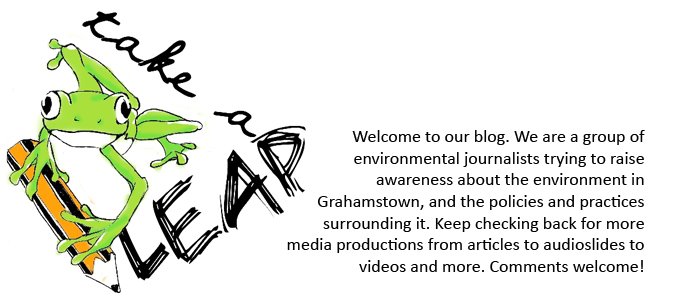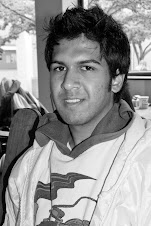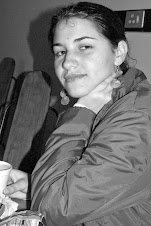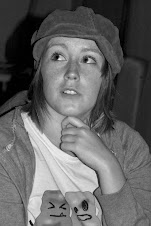By Nicola Brand and Lauren Macnab
As designers for the “Take a LEAP” team, we have positioned ourselves as instruments through which communicating Makana’s environmental issues and concerns takes on a visually appealing and exciting stance. We are faced with the task of filtering the somewhat tedious and monotonous policies, problems and opinions of the Makana municipality and community through design-based imperatives in order to produce media that is not only appealing to the target audience, but also widely understandable and accessible.
However, given both the financial restrictions we face and the nature of the content that we aim to communicate through our design, ‘traditional’ design ventures – such as magazines and newspapers – are not the primary solution to the efficient production, distribution and communication of the content. With financial issues, the content and the target audience being determining factors on the area of design that we have adopted for this project, we have veered more toward designing media that is cost effective yet still effective. We aim to produce media productions which are widely understandable, accessible, and distribution-efficient.
In working as a part of the WEPD team for “Take a LEAP”, we have agreed with the writers on appropriate content for design media. With the WEPD team following stories on the Goat Village and Makana’s LEAP (Local Environment Action Plan), we as the designers have decided to use the practice of design to make these stories more interesting, more visual and more understandable, while adopting non-bias, neutral view toward the municipality and the community. In other words, in implementing sections of these stories into our design, we are neutralizing content that could be taken as being bias or subjective. For example, the writing story covering the issues on LEAP exposes the flaws of Makana municipality in their inability to properly and effectively implement their environmental policies, whereas the design side of the story turns the issues into that of education.
With the LEAP story, we are aiming to design an educational pamphlet that aspires to educate the public (our target audience) about LEAP. This pamphlet will adopt the theme (identity, colours and intentions) of our group and visually communicate the content derived from LEAP, with the intention on educating the public on a very important part of their municipality’s policy that there most likely are oblivious to. This pamphlet will be simple, yet effective and appropriately communicative in its simplicity. In its visual communication it will include diagrams, tables, cartoons, graphs and other visual elements that make understanding LEAP more simple and exciting. This pamphlet will be produced and distributed with the intention of accompanying the story based on LEAP in Makana. It will add volume and colour to the LEAP story and perhaps another dimension or understanding to the issues brought forward and discussed in the story. We are intending to mass-print the pamphlet on normal printing paper in order to widely and easily distribute it to the community – on campus, in the suburbs, in town and in the township.
Another design project that we have chosen to take on for “Take a LEAP” WEPD team in the production of a movable banner – a visual representation of the opinions of the community regarding water, electricity and waster removal in Makana. This banner will be a large material banner that is appropriate for people to clearly write down their opinions on any of the above specified areas. Multi-coloured permanent markers will be used as the writing tools, where citizens of Makana will be granted the opportunity to write, draw or symbolize in any way possible their thoughts and opinions. This allows for the inclusion of the illiterate and uneducated in the project, as their opinions are as important to us as the literate and educated.
This banner will be moved and positioned in different locations in Grahamstown – Pick ‘n Pay, Checkers, Shoprite and on the Rhodes University campus – in order to provide a platform for the variety of voices that constitute the Grahamstown community. We, as the designers, are hoping to take this design idea further once the above mentioned initial stage has been completed. We are looking into the possibilities of using the actual banner itself, in a design sense, to further communicate and substantiate the content of our project as a whole.
The third design venture is related to the Goat Village story where we are intending to design a brochure or flyer to promote the Goat Village and make the public aware of it. We see this as a form of social marketing (not propaganda) where we are – in line with the goals of “Take a LEAP” – aiming to the make the public aware of a local project that is beneficial to the society and brings a positive aspect into the Makana community. Information around the Goat Village is still being gathered and filtered, therefore, directed and focused design decisions regarding this story can only be properly initiated once the content has been appropriately gathered to insure consistency and relevance across “Take a LEAP” media.
As designers we have taken on the task of creating a united identity for “Take a LEAP” – including television media, photo-slide media and WEPD media. “Take a LEAP” was formed out of the groups goal of urging the community (through our media) to get to know the municipality (a neutral view to both the community and the municipality). We formed this united view in order to ensure consistency and relevance throughout the media. With this in mind, we designers will design a group logo to accompany our goal and slogan – “Take a LEAP, get to know your municipality”. This logo will symbolize our position as environmental journalists who represent both sides of the story. Along with this, we have thematic colours for our media, especially that of design. These are green (environmental), orange (bright, colourful and contrasting to green), black and white.
Tuesday, September 30, 2008
Compromising our Investigative Approach
Bernard DeVoto said, “My job is write about anything in life that may interest me, but it also to arrive at judgments under my own steam. With some judgments that is the end of the line; express them and you have nothing more to do. But there are also judgments that require you to commit yourself, to stick your neck out. Expressing them in print obliges you to go on to advocacy. They get home to people’s beliefs and feelings about important things, and that makes them inflammable.” (Frome, 1998: 70).
What has become clear in studying the environment is that it is not merely an aspect that affects peoples’ lives, it concerns the way people live and experience the world around them, effecting their health, well-being, economy and general situations. Following the 1992 Rio de Janeiro summit and South Africa’s commitment to Agenda 21, it is crucial as a mediator between government and community, to ensure that sustainable development policies are being taken serious at a local government level and that implementation is occurring, which can thus serve as a framework for broader national policies.
The Makana municipality has adopted the LEAP (2005) policy, which provides a detailed plan for implementation of sustainable development at different levels, including waste, water and electricity, which will serve our main area of focus. Surveys handed out by us to the general public have revealed disappointing feedback in terms of environmental care, where almost none of the public have heard of LEAP policies, can recognize any implementation of such policies in their areas and complain of critical problems such as waste not being collected for at least six months at a time. The LEAP policies, in practice, it seems, have been stagnant for some time.
The municipality needs to start answering to the public. It is clear that the state of the Grahamstown environment is causing an infringement on the basic human rights of its people, for example, LEAP policies clearly note that less than 20% of rural townships have clean, running water and adequate sanitation system, yet public feedback shows little has been done to improve this problem, despite initial observation.
We do not wish to criticize the municipality and suggest that they are doing nothing, thus we have planned to serve an educational role, providing the public with information about LEAP policies and allowing them insight into the intentions of the municipality and how far they have gone to achieve these. We also wish to serve as a platform between municipality and residents, where we can express the judgments of both and leave it to them for debate, contestation and change.
However, while willing to compromise in this way by publicizing municipality’s aims, the difficulty in getting them to answer to us is making it clear how we, as journalists, also need to effect change. Thus in terms of our investigative media production, we are going to have to stick our necks out and commit ourselves to getting hold of the Makana municipality. We need to facilitate a space for people to express how they feel, what they believe in and the important and crucial problems that are occurring environmentally, effecting their everyday lives. The municipality cannot keep avoiding the public and we have an evident role in building the bridge between government and public so that these questions can finally be answered.
What has become clear in studying the environment is that it is not merely an aspect that affects peoples’ lives, it concerns the way people live and experience the world around them, effecting their health, well-being, economy and general situations. Following the 1992 Rio de Janeiro summit and South Africa’s commitment to Agenda 21, it is crucial as a mediator between government and community, to ensure that sustainable development policies are being taken serious at a local government level and that implementation is occurring, which can thus serve as a framework for broader national policies.
The Makana municipality has adopted the LEAP (2005) policy, which provides a detailed plan for implementation of sustainable development at different levels, including waste, water and electricity, which will serve our main area of focus. Surveys handed out by us to the general public have revealed disappointing feedback in terms of environmental care, where almost none of the public have heard of LEAP policies, can recognize any implementation of such policies in their areas and complain of critical problems such as waste not being collected for at least six months at a time. The LEAP policies, in practice, it seems, have been stagnant for some time.
The municipality needs to start answering to the public. It is clear that the state of the Grahamstown environment is causing an infringement on the basic human rights of its people, for example, LEAP policies clearly note that less than 20% of rural townships have clean, running water and adequate sanitation system, yet public feedback shows little has been done to improve this problem, despite initial observation.
We do not wish to criticize the municipality and suggest that they are doing nothing, thus we have planned to serve an educational role, providing the public with information about LEAP policies and allowing them insight into the intentions of the municipality and how far they have gone to achieve these. We also wish to serve as a platform between municipality and residents, where we can express the judgments of both and leave it to them for debate, contestation and change.
However, while willing to compromise in this way by publicizing municipality’s aims, the difficulty in getting them to answer to us is making it clear how we, as journalists, also need to effect change. Thus in terms of our investigative media production, we are going to have to stick our necks out and commit ourselves to getting hold of the Makana municipality. We need to facilitate a space for people to express how they feel, what they believe in and the important and crucial problems that are occurring environmentally, effecting their everyday lives. The municipality cannot keep avoiding the public and we have an evident role in building the bridge between government and public so that these questions can finally be answered.
Our Focus
“Take a LEAP, get to know your municipality”
Aims:
§ To encourage debate between municipality and Grahamstown community.
§ To provide a platform of engagement for the community and municipality policies.
§ To publicize municipality policies and obtain feedback for the community.
§ To investigate the implementation of policies.
Aims:
§ To encourage debate between municipality and Grahamstown community.
§ To provide a platform of engagement for the community and municipality policies.
§ To publicize municipality policies and obtain feedback for the community.
§ To investigate the implementation of policies.
Here is the platform: speak out!
“I think we deserve more”
“I hate it”
“They are not doing their job”
These are just a few of the responses we received when we sent out surveys asking what people thought Makana Municipality was doing for the environment. These surveys were conducted in both English and Xhosa as we aimed to gain the viewpoints of students, local residents and residents within the location. The answers even though different in magnitude were generally the same. There was either a complete lack of knowledge as to what Makana’s environmental plans are or there was outrage at the municipality’s lack of implementation of these plans.
Our aim however is not to simply criticize Makana municipality but rather undertake some investigative reporting to see what is being done and offer the people a form of constructive criticism. Yet after the surveys were completed we realized there is a severe lack of knowledge concerning LEAP, Makana’s environmental action plan. Therefore we also hope to educate the public on the role of the municipality in the environment and showcase what is being done. We hope to engage all citizens of Grahamstown in municipal problems and raise a platform for citizen debate.
We also want to do human interest pieces, hopefully reaching audiences on an emotional level. Even though some of these issues of waste, electricity and waste apply to all large sectors of the community, it is through the story of one individual whose life is harmed or has been made better due to the municipalities projects. We have met with the municipality, in specific Kevin Bates, and he has agreed to act as a source of information. We do not want to simply align ourselves with the municipality, nor do we want to criticize them. As our slogan says we want to get people to know their municipality and make people aware of both the good and bad being done. It is about involving the people in the issues that concern them and creating awareness.
Alongside helping with education pamphlets on LEAP and an investigative look at Makana’s environmental policies, we will be following a story on the goat village. This project appears to be a great source of income for farmers as well as creating eco tourism in the area. I would like to focus on the impact this sort of project can have on an individual life, and I hope I can illustrate what such a project can do to turn one persons life around.
Ultimately we want to make a platform for the community to speak about their environmental concerns, and raise awareness as to what has been done yet at the same time what still can be done.
“I hate it”
“They are not doing their job”
These are just a few of the responses we received when we sent out surveys asking what people thought Makana Municipality was doing for the environment. These surveys were conducted in both English and Xhosa as we aimed to gain the viewpoints of students, local residents and residents within the location. The answers even though different in magnitude were generally the same. There was either a complete lack of knowledge as to what Makana’s environmental plans are or there was outrage at the municipality’s lack of implementation of these plans.
Our aim however is not to simply criticize Makana municipality but rather undertake some investigative reporting to see what is being done and offer the people a form of constructive criticism. Yet after the surveys were completed we realized there is a severe lack of knowledge concerning LEAP, Makana’s environmental action plan. Therefore we also hope to educate the public on the role of the municipality in the environment and showcase what is being done. We hope to engage all citizens of Grahamstown in municipal problems and raise a platform for citizen debate.
We also want to do human interest pieces, hopefully reaching audiences on an emotional level. Even though some of these issues of waste, electricity and waste apply to all large sectors of the community, it is through the story of one individual whose life is harmed or has been made better due to the municipalities projects. We have met with the municipality, in specific Kevin Bates, and he has agreed to act as a source of information. We do not want to simply align ourselves with the municipality, nor do we want to criticize them. As our slogan says we want to get people to know their municipality and make people aware of both the good and bad being done. It is about involving the people in the issues that concern them and creating awareness.
Alongside helping with education pamphlets on LEAP and an investigative look at Makana’s environmental policies, we will be following a story on the goat village. This project appears to be a great source of income for farmers as well as creating eco tourism in the area. I would like to focus on the impact this sort of project can have on an individual life, and I hope I can illustrate what such a project can do to turn one persons life around.
Ultimately we want to make a platform for the community to speak about their environmental concerns, and raise awareness as to what has been done yet at the same time what still can be done.
Making a change
Working closely with the Makana Municipality policies and issues of governance in regard to the environment has proved to be rather arduous. On the one hand, in light of the traditional ideas surrounding the media's attitude towards those in power, we want to play the all-important 'watchdog' role and rigorously investigate the municipality. This approach seems to be even more pertinent due to the fact that, according to a number of surveys carried out by our WEPD group, it does not appear as if any of Makana's environmental policies have been properly implemented. Even worse, almost no one we questioned had even heard of the municipality's Local Environmental Action Plan (LEAP). As journalists, we have a responsibility to find out why the municipality are not carrying out their duties as an institution responsible for the people of Grahamstown, particularly when issues surrounding the environment have become so critical.
This said, however, there are ways in which the media can facilitate change and work as a 'tool for development', something which our group believes is equally important. So while some of our WEPD media production will take an investigate approach, we also want to do something a bit different, something that can help the implementation of LEAP as well as make people aware of the environmental policies that are in place.
So after much brainstorming and many, many meetings we decided to work with the idea of creating a kind of educational pamphlet about LEAP. Obviously we would hope to reach as many people as possible with this pamphlet so it would need to be produced in a way that would speak to both students and local residents living in all areas of Grahamstown - it may be necessary, then, to have pamphlets printed in English and Xhosa. This pamphlet would tell people what they need to know about LEAP; what some of the policies are, how they operate, how they can get involved, who to contact for more information.
One of the biggest problems surrounding the production of media about government policies is that it is fairly easy to fall into the trap of making it boring and simply regurgitating the same kind of jargon and complicated language used in the policies and official statements. Our challenge would be to make these ideas accessible to the proverbial 'man on the street'. Making the pamphlet as visually stimulating as possible, using cartoons, pictures and interesting layout designs, would certainly help here but also careful attention would need to be paid to the language used.
What we are hoping is that this pamphlet will provide a platform for engagement and debate with the environmental policies, particularly in light of the fact that it is an extremely relevant issue, as well as raise awareness about LEAP and what the Municipality can and should be doing. After all, it is about time that a change was made and perhaps we can give the people some empowerment to do that.
This said, however, there are ways in which the media can facilitate change and work as a 'tool for development', something which our group believes is equally important. So while some of our WEPD media production will take an investigate approach, we also want to do something a bit different, something that can help the implementation of LEAP as well as make people aware of the environmental policies that are in place.
So after much brainstorming and many, many meetings we decided to work with the idea of creating a kind of educational pamphlet about LEAP. Obviously we would hope to reach as many people as possible with this pamphlet so it would need to be produced in a way that would speak to both students and local residents living in all areas of Grahamstown - it may be necessary, then, to have pamphlets printed in English and Xhosa. This pamphlet would tell people what they need to know about LEAP; what some of the policies are, how they operate, how they can get involved, who to contact for more information.
One of the biggest problems surrounding the production of media about government policies is that it is fairly easy to fall into the trap of making it boring and simply regurgitating the same kind of jargon and complicated language used in the policies and official statements. Our challenge would be to make these ideas accessible to the proverbial 'man on the street'. Making the pamphlet as visually stimulating as possible, using cartoons, pictures and interesting layout designs, would certainly help here but also careful attention would need to be paid to the language used.
What we are hoping is that this pamphlet will provide a platform for engagement and debate with the environmental policies, particularly in light of the fact that it is an extremely relevant issue, as well as raise awareness about LEAP and what the Municipality can and should be doing. After all, it is about time that a change was made and perhaps we can give the people some empowerment to do that.
Subscribe to:
Posts (Atom)




